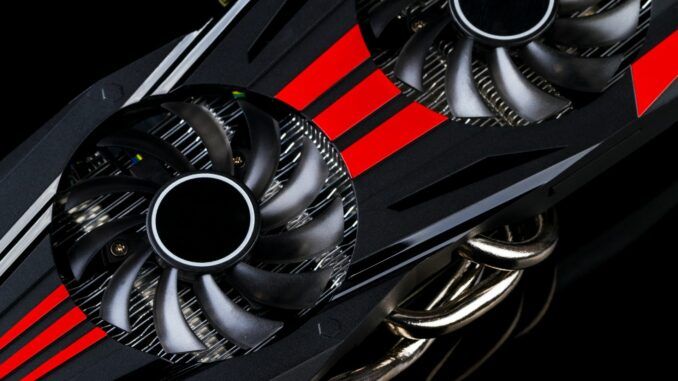
Why are graphics cards so expensive? It’s a terribly simple question upon a Gordian knot of tangled answers. Because this increase in price has a long history and sits at the tail of a breakdown of global commerce in its entirety.
How can graphics cards released last year for $700, cost more than double that on secondary markets today. Why aren’t Nvidia and AMD just making more graphics cards to meet that demand? And at the end of the day, how can you get your hands on one?
To even attempt an answer to these questions, we have to dive into geopolitics, manufacturing history, Dogecoin, and even darker, scarier places than that. So, let’s see if we can make sense of this mess and dive right in.
Demand
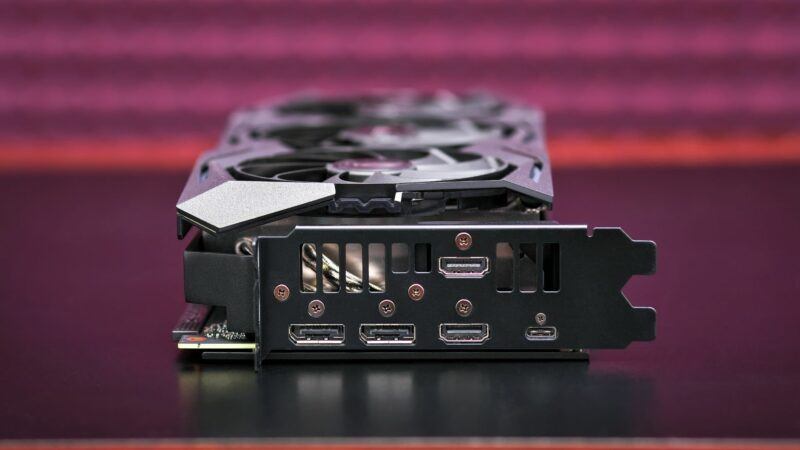
The easiest aspect to understand of the shortage and inflating cost of graphics cards is a rapid increase in demand. It is the most basic economic principle that says that when demand outpaces supply, the price rises. And that is true with graphics cards now, but what we are experiencing isn’t just that.
Globally, from car manufacturers to medical suppliers, to yes, graphics card fabricators, nobody has enough of nearly any kind of semiconductor chip, the foundation of most electronics.
So, when we talk about why graphics cards are so expensive, what we are really talking about is a global shortage of semiconductors, an integral component in creating most electronics including graphics cards.
Now, there are specific problems with graphics card producers like Nvidia and AMD, but fundamentally, the surging demand for electronics in the last couple of years far outpaced semiconductors production which caused bottlenecks for too many products to list here, notably among them are graphics cards.
Now to begin, this trend didn’t start with Covid. There have been rumbles about the lack of semiconductors since at least 2001 due to a shortage in wafers, a component to creating semiconductors.
Moreover, the 2020 spike in demand for electronics exacerbated an already problematic trend. These days it isn’t just cell phones and laptops that use semiconductors, but every car, smart speaker, and smart fridge need them too.
In fact, in their 2021 State of the U.S. Semiconductor Industry report, the Semiconductor Industry Association (SIA) called semiconductors “The foundation of modern life.” Even before the drought and pandemic and Samsung smart fridge, that rising demand already threatened to outstrip production.
In addition to this spike in demand, few companies make semiconductors because their fabrication is extremely expensive, time-consuming, and particular.
For example, to clean the aforementioned wafers that later become semiconductors, the Taiwan Semiconductor Manufacturing Co Ltd (TSMC), one of the largest producers of both wafers and semiconductors, uses more than 150,000 tons of water per day.
So in 2021, when Taiwan experienced one of its worst droughts in the last 100 years, chipmakers struggled to get access to the necessary amounts of clean water in order to produce chips.
This drought only worsened the global semiconductor shortage but goes to show how specific the needs of semiconductor foundries are. Many other industries don’t have to contend with these types of constraints.
- YOU MAY ALSO LIKE: Best Low Power Graphics Cards
Cryptocurrency Mining

So let’s specifically address the graphics cards that aren’t in the room. So far, when we’ve been discussing increasing demand, it has been generalized with semiconductors.
Now that is true, that globally there is a shortage of semiconductors that have made the production of graphics cards slower and most expensive. That being said, a major part of why specifically graphics cards are so egregiously expensive right now is cryptocurrency mining.
This increased demand for graphics cards for cryptocurrency mining dates back nearly a decade now but came to a head in 2020. In mid-2020 Nvidia and AMD released their newest, fastest generation of graphic cards.
Amidst a global semiconductor shortage as well as the biggest boom in the value of cryptocurrency, graphics cards became a hot commodity.
To put this in perspective, according to Jon Peddie Research, a tech market research firm, 25% of all graphic cards sold in the first quarter of 2021 went to cryptocurrency miners. Graphics cards became so hard to find, that even older generations of graphics cards sold out.
But what is cryptocurrency mining and why does it need ridiculous amounts of cutting-edge graphics cards?
Well, to make a long, long story shorter, cryptocurrency mining is the process of validating transactions done with cryptocurrency like Bitcoin, Ethereum, or yes, Dogecoin through the blockchain system.
The mining process boils down to attempting to solve a puzzle called ‘Proof of Work’ in order to send money securely. This Proof of Work is the encryption process of cryptocurrency, and the reason it is so secure.
In order to spend cryptocurrency, a miner, a third party to the transaction, attempts to solve this Proof of Work puzzle to come up with a string of numbers called a ‘hash’ that validates that the currency is going to the right place.
Generating the correct hash means the miner attempts to generate random numbers through brute force processing power until he or she happens to generate the correct one.
Cryptocurrency mining is lucrative because for every cryptocurrency transaction, the miner, again a third party to the transaction, receives payment for producing the correct hash. That payment, called a block reward, is a specific amount of cryptocurrency based on a function that limits the total number of a cryptocurrency in circulation.
For cryptocurrencies like Bitcoin, the amount of Bitcoin given per successful hash is constant. Therefore when the value of Bitcoin rises, a miner receives more money per successful hash: miners earn more money for the same amount of work.
During the boom of 2020 and to this day, many cryptocurrencies values surged so the rewards of mining surged with them.
Mining cryptocurrency requires huge amounts of energy, processing power, and time. For many cryptocurrencies, proof of work is public which means that miners race to produce the correct hash first to receive payment.
Top-tier graphics cards like Nvidia’s GeForce RTX 30-series and AMD’s Radeon RX 6000 series cards are some of the fastest graphics cards ever made and can work on several proofs of work puzzles at a time making them perfect for cryptocurrency miners.
- RELATED ARTICLE: Best White Gaming GPUs
Scalpers
So what happens during a global shortage of advanced technology coinciding with a boom in cryptocurrency? Unfortunately, this cyberpunk dystopia only has one answer: scalpers.
When there is this much money on the table not only for gamers looking for the latest and greatest but also for cryptocurrency miners literally printing money with graphics cards, anyone able to hoard stock could charge insane prices.
Couple that shortage and desperation with advanced bots that can buy out full shipments faster than any human, and you get some of the wild prices seen for graphics cards on third-party vendor sites like eBay.
Both Nvidia and AMD introduced measures to stymie scalpers upon release of their graphics cards back in 2020, but it’s hard to look back on those measures now as anything other than purely symbolic.
The odds are if you’ve found a graphics card in stock recently, it’s been at astronomical prices due to this hoarding and resale. It is estimated that more than $61 million worth of graphics cards have been resold on the secondary market in the last year.
And unfortunately, that trend isn’t going anywhere. Scalping isn’t illegal in the United States, and in the countries where it is, scalping is notoriously hard to regulate.
Just like concert tickets or other limited supply commodities, scalping might just be something we deal with moving forward as long as demand stays this strong for graphics cards.
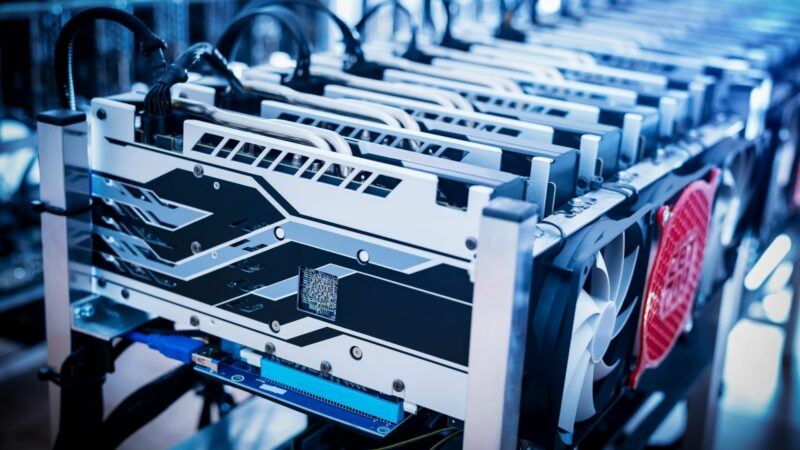
Covid-19
The ongoing Covid-19 pandemic changed the way the world worked.
Both in the abstract, in that it changed social norms, showcased dysfunctional systems, and grew and tore down entire industries. But also in the concrete sense: the pandemic fundamentally changed how people do work in the 21st century.
Offices closed indefinitely, remote work became the norm, and nearly 3% of the workforce revolted over low pay and strict hours, in what is being called “The Great Resignation.” That meant that more people were zooming, and simply using computers than ever before.
It was that sharp increase in the demand that whiplashed the entire industry into shortage. According to SIA, global semiconductor sales decreased roughly $56 billion in 2019, nearly 12%. Then the pandemic hit.
Initially, many including an April 2020 study by McKinsey & Company, projected that semiconductor sales would plummet in 2020, decreasing by up to 15% annually. That did not happen. Instead, sales of semiconductors increased to never-before-seen levels.
From October 2020 to October 2021 alone, global semiconductor sales increased 24%, more than $100 billion. Those numbers were driven by remote working, home improvements, medical technology, and the myriad of other pandemic surges in tech consumption.
Covid-19 and global supply chain issues pushed the threat of semiconductor shortage into a global upheaval.
Covid-19 and Gaming

For anyone who is a gamer, it isn’t a surprise that the amount of gaming done during a lockdown surged. Apparently, the rest of the world didn’t get the memo.
Sales of consoles and time spent playing video games spiked in March of 2020 and haven’t really gone since. All that interest created unprecedented demand for consoles.
The terrifyingly well-timed release of Animal Crossing: New Horizons in March of 2020 and the subsequent sales of Nintendo Switch consoles grew the company’s profits threefold in 2020.
As Steam put it in their ‘2020 Year in Review,’ “Video game playtime surged when people started staying home, dramatically increasing the number of customers buying and playing video games, and hopefully bringing some joy to counter-balance some of the craziness that was 2020.”
Long story short, people were spending record-breaking amounts of time gaming, and interest in consoles grew to a breaking point.
Then the next generation of consoles was released in November of 2020 with the Xbox series X and S and Playstation 5. Initial demand led to sellouts across the globe almost immediately. Supply for both consoles hasn’t caught up with that wild demand more than a year after their release.
In December 2020, Lawrence Hryb, the director of programming for Xbox live said in a Microsoft year-end podcast: “I get some people [asking], ‘why didn’t you build more? Why didn’t you start earlier? Why didn’t you ship them earlier? […] It’s really just down to physics and engineering. We’re not holding them back: we’re building them as fast as we can.”
And unfortunately, he’s right: chip producers like TSMC are running at or beyond full capacity. Even the prospects of raising those limits can take years.
- YOU MAY ALSO LIKE: Best Motherboard Brands
Supply Chains and Tariffs
Another terribly complicated, innumerably multifaceted issue that has added to the price of graphics cards is the shutdown of the global supply chain.
Again, to make a long story short, due to the closure of factories across the world early into the pandemic, coupled with the increase in demand for global shipping, led to shortages of many, many products to this day.
In the New York Times Daily episode about the supply chain, global economics correspondent Peter Goodman said the pandemic shifted our supply chain from traditional models of brick and mortar stores towards e-commerce saying, “That e-commerce future puts a lot more strain on supply chains because it’s much more complicated.”
The antiquated way goods move across the world cannot keep up with both pandemic demand, and an explosion in e-commerce.
Now global supply chain issues affected the prices of goods across the board. What specifically affected graphics were the 2018 tariffs enacted by the Trump administration against Chinese goods that computer parts had previously been excluded from.
These tariffs came into effect in 2021 leading to price increases almost immediately. These price increases came at times of shortage, unheard-of demand, and production issues, only exacerbating the issue.
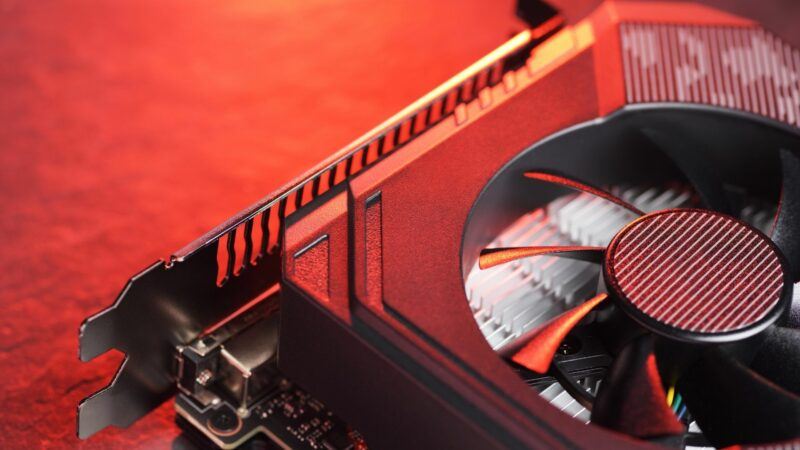
When Will it End?
The term ‘perfect storm’ has been used a lot when it comes to graphics cards and the semiconductor shortage.
And while that term is reductive in that it seems to gloss over the decades of issues plaguing semiconductor fabrication as well as problems within the global supply chain, it’s hard to argue it isn’t accurate.
Pandemic, drought, trade wars, unprecedented cryptocurrency boom, a global shortage in semiconductors, and a demand for electronics that even 10 years ago would have sounded like science fiction, all have added to the graphics card shortage we find ourselves in today.
But is there a light at the end of the tunnel?
Well if you’re Nvidia’s CEO Jenson Huang, that light is still a pretty far way off. In November 2021 at Nvidia’s GPU Technology Conference, Huang said, “I think that through the next year, [2022] demand is going to far exceed supply. We don’t have any magic bullets in navigating the supply chain.”
And when it comes to ramping up the production of semiconductors to increase the production of graphics cards, no solutions are quick ones.
In June of 2021, the U.S. Congress passed the United States Innovation and Competition Act that allocates billions of dollars into semiconductor research, as well as aid to the U.S. supply chain.
Though this is undoubtedly good news for U.S. tech consumers, it will take years before we see any of the benefits of this bill.
In fact, even for established semiconductor fabricators like Samsung and TSMC, opening more foundries to increase production is a process that takes years and wouldn’t ease the shortage we are currently in.
As far as fixing the supply chain, experts across the board remain unsure about how long it could take to return to something like normal. In fact, supply chain issues are so complicated and decentralized, many struggles even to know how to change them.
Again, from the New York Times’ Daily episode, Peter Goodman said, “The global supply chain is made up of so many millions of actors in multiple countries on every shore pursuing their own individual interests, corporate interests, national interests. There are just so many factors.”
When steps are taken to ease supply chain issues, like in November 2021 when the Los Angles port moved to continuous 24/7 operation, they are only single pieces of a vast puzzle.
Now, this has been a grim forecast. But that isn’t to say no action is being taken to ease the graphics card shortage, and that there aren’t ways for you to get your hands on one.
First, let’s take a look at some solutions to the problems contributing to the graphics card shortage and inflating the price, then discuss some tactics you can use to get your hands on one without paying scalpers.
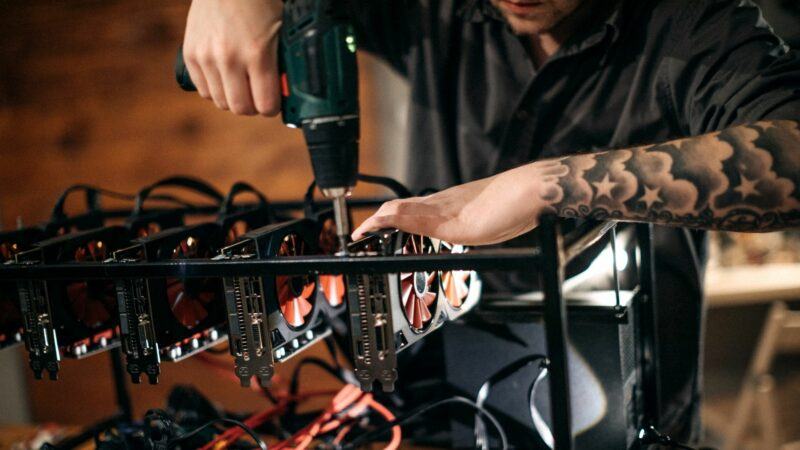
- RELATED READING: Best Gaming Monitor Brands
Anti-Scalping Measures
The U.S. House of Representatives has introduced a bill to make illegal the use of bots to purchase goods online in order to introduce scarcity and resell them at a profit.
While Jacob Roach of digitaltrends.com isn’t optimistic about the bill’s effects, even a symbolic action with a looming threat to legal repercussions could slow the scalping trend.
Intel’s Arc Alchemist GPU
A more solid glimmer of hope is a new competitor entering the fray of cutting-edge graphics cards. In the first quarter of 2022, Intel is releasing their first high-end graphics card: the Arc Alchemist line.
This introduction comes at the perfect time not only for the specific shortage but for the long-term production of graphics cards. Another company stepping up to rival Nvidia and AMD is the short-term solution for production that might actually drive prices down and aid this shortage.
How You Can Get Your Hands on a Graphics Card
Wonderfully, during this struggle for graphics cards, communities have been born attempting to help others find and purchase graphics cards at the prices they were supposed to sell at.
Consumers of all stripes have also found loopholes to purchase graphics cards even when they are out of stock. Let’s go over a few strategies you can use to get your hands on one.
Stock Trackers and Lotteries
Opposite of scalpers punishing consumers for profit are communities like Newegg’s Shuffle. Every day, Newegg sells out of stock or high-demand products, often graphics cards, by allowing users to enter a lottery to buy those products at their original price.
Unfortunately, because of demand, tens of thousands of people can enter lotteries every day for these products, leaving your chances slim.
Other communities like the StockDrops server on Discord help consumers know when products come back into stock. Similar communities have popped up across YouTube, Twitch, and Twitter.
In order to avoid bots, many have turned to physical stores like Best Buy’s supply drops to find graphics cards. Otherwise, there are plugins like Distill and Hotstock that can help you know when products come into stock quickly in order to get a jump on buying one.
Prebuilt Rigs
A more definite, if less picky option is buying a prebuilt gaming laptop or PC. Due to contracts on how graphics cards are distributed, you might not be able to find the graphics card you want, but odds are better that you can find a prebuilt PC or laptop with that graphics card already installed.
Now of course this solution isn’t for everyone. Many turn their noses up pre-built rigs, while others have been buying them purely for their GPUs.
Pre-built gaming rigs are naturally more expensive than building them yourself, and of course, aren’t as customizable. But if your ailing rig is in desperate need of an update, and the thought of buying a single graphics card for the same price as a full pre-built rig disgusts you, this might be your best option.
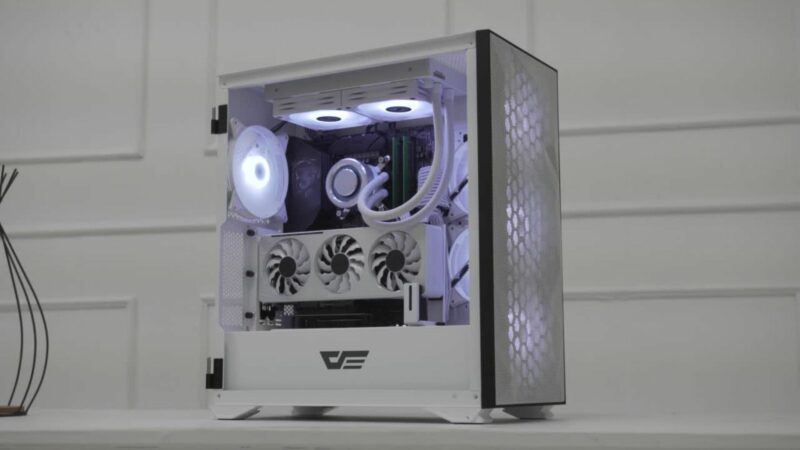
A Path Forward
So what to do about graphics cards? Well, the forecast doesn’t look great. Even with Intel’s release of the Arc Alchemist line, it doesn’t look like the shortage is going to end anytime soon.
Issues of ramping up semiconductor production and fixing the global supply chain appear to be around for the foreseeable future. So, unfortunately, if you lack the time to monitor stock drops, the cash to buy a pre-built rig, or the luck to win lotteries, your best option is just to wait.
Together we can dream of ray tracing and sunnier days beyond this single, perfect storm.

Be the first to comment